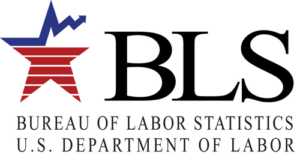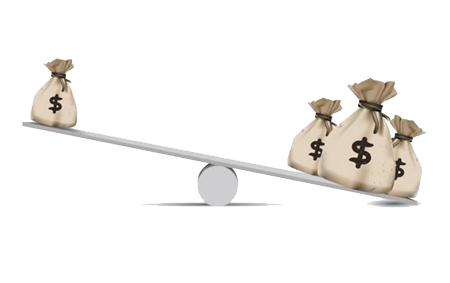What’s a fair wage for the job you do?
Everyone deserves to be paid what they’re worth. We’ll show you your value to an employer by telling you what others who do the same job are paid. It’s based on the gold standard of current salary data, published by the U.S. Bureau of Labor Statistics, and used by all U.S. businesses.
What is the Bureau of Labor Statistics (BLS)?
 The U.S. Bureau of Labor Statistics (BLS) is a federal government agency that conducts quarterly salary surveys of employers across the country to determine what specific jobs pay. It’s the best and most reliable source for accurate wage data. (You can read more about the BLS here.)
The U.S. Bureau of Labor Statistics (BLS) is a federal government agency that conducts quarterly salary surveys of employers across the country to determine what specific jobs pay. It’s the best and most reliable source for accurate wage data. (You can read more about the BLS here.)
The results of their salary surveys are published for each state, and also on a national level. We’ll help you use this data to find your fair wage!
To categorize similar positions, the BLS uses what’s called the Standard Occupational Classification (SOC) system (created by the U.S. Department of Labor). Each occupation is assigned a specific code, called the SOC code. Within each SOC code they group similar jobs, provide specific job tasks, and detailed job activities.
Finding SOC codes used to be challenging. Now, to help correlate SOC codes to job titles, the Department of Labor has a database called the O*NET Code Connector. Simply search for a job title in their database and it will match it to the most closely aligned SOC codes. Once you find your SOC code, you can then look it up in the BLS survey data to see the range of pay, either nationally or in your state. A link to the easy-to-use O*NET Code Connector database is in Step 1.
It may sound a bit complicated, but it’s actually very simple.
Why should employees use this data?

Employees should use this data to ensure they’re being paid a fair wage for the work they do. You deserve a fair wage... it’s that simple! (Click here to understand the difference between a fair wage and a livable wage.)
Asking for a fair wage is a very reasonable request, and you should beware of any employer who looks to exploit its workers to enrich its executives and shareholders at the expense of its employees.
Employers who care about paying a fair wage use this government survey data to determine how much to pay their employees, and to adjust their pay scales on an annual basis. If your current employer won’t offer equitable pay, find one who will. In the long run, you’ll be more successful and much happier.
Why should employers use this data?
 Employers who are concerned about paying their employees a fair wage review this data on an annual basis to ensure their compensation programs remain competitive. They know that if they don’t ensure competitive pay, they’ll struggle to recruit and retain qualified employees. In addition to a higher turn-over rate, they’ll also have decreased employee satisfaction.
Employers who are concerned about paying their employees a fair wage review this data on an annual basis to ensure their compensation programs remain competitive. They know that if they don’t ensure competitive pay, they’ll struggle to recruit and retain qualified employees. In addition to a higher turn-over rate, they’ll also have decreased employee satisfaction.
In the long run, not paying a fair wage affects the bottom line. It leads to increased expenses in hiring and training, as well as lost productivity and decreased revenue due to lower client satisfaction.
Does your employer use this data to ensure a fair and competitive wage? If they don’t, you may want to consider working for one who does, or introduce them to this data so they can become a company that follows this fair wage practice.
